#JohnArkBlog17
Text

Dave and I were living and working as engineers in West Germany in Europe. The time was in the 1960s. The USSR had a firm grip on Eastern Europe. The Iron Curtain with double electric fences enclosing a mine field ran from Northern Norway down through central Europe and out to the Eastern border of Turkey. This border was patrolled by the military with NATO on one side and the
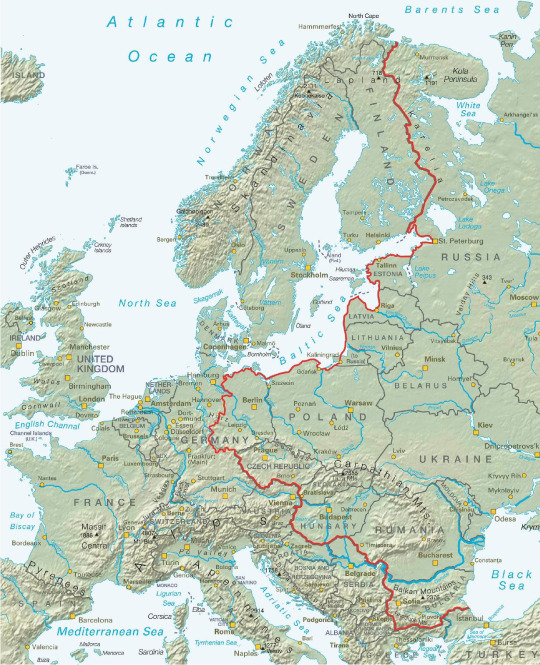
Warsaw Pact on the other side this entire distance. Our company was awarded a contract to design, manufacture and install an air defense system that would enable NATO to defend the West from an air attack from the East. Dave and I were working on this system. We had read the book 1984 and the book Animal Farm by George Orwell which was written in the mid 1940s. Aleksandr Solzhenitsyn and the Gulag Archipelago was to come in 1970 and verify the vision of Orwell. During the time Orwell was writing his books, the West was in league with Stalin and Russia against Nazi Germany. Orwell had difficulty getting Animal Farm published for that reason. After publication, Orwell suggested as the title for the French publication “Union des républiques socialistes animales” which abbreviates to URSA, the latin word for “bear,” a symbol of Russia. He was convinced of the evil totalitarianism of Stalin and Russia. Orwell was a democratic socialist, not a disillusioned communist. Anyway, Dave and I had an insatiable desire to take a good look behind the Iron Curtain ourselves with our own eyes. As much as we could determine, we wanted to know about living in Communism. Inasmuch as Dave was of Polish ancestry and we were also students of WWII history, we decided that it would be interesting to go to Poland. We found that we would have to obtain a visa for this trip and to do so we would have to submit a very detailed itinerary along with several other pages of information as well as our passports to the Polish Military Mission (PMM) in Berlin. OK, we submitted all that. We were planning a two week trip. We had already traveled through East Germany to Berlin, so we knew the drill for traveling behind the Iron Curtain. On those trips to Berlin at the border crossing between West and East Germany (Iron Curtain) we were told by the US military not to stop and not to venture off the main road – to drive nonstop and directly to Berlin. We were told that if we had car trouble to put the hood up and wait with the car, that the US military that patrolled the road, maintaining access to Berlin, would find us. When we discussed driving in Poland, we received similar instructions except that there would be no US military to assist us. Drive point to point according to the submitted itinerary and in case of car trouble wait with the car for the military to arrive. On that drive through East Germany to Berlin we observed small villages from the Autobahn. Off the highway the roads were not paved and we saw animals being used for farming, no tractors and few cars in those small towns. We really saw how primitive the society was. It was with stark contrast to us in the West. OK, our plan would be to drive through East Germany to Berlin on the first day. On the second day we would drive directly from Berlin to Warsaw (350 miles).

We would spend four days in Warsaw. One day to drive from Warsaw south to Kraków (200 miles). Five days in Kraków. One day to drive from Kraków back to Berlin (400 miles). We made all the arrangements. The last required item was the visa in our passports which the PMM in Berlin had. Our main objective was to witness life behind the Iron Curtain, but we certainly had some tourist objectives in mind, also. Frederic Chopin was one of our favorite composers. He was born in Warsaw and lived there for 20 years before moving to Paris for the last 19 years of his life. We wanted to visit the Chopin Museum there and his family home which is just outside of Warsaw.
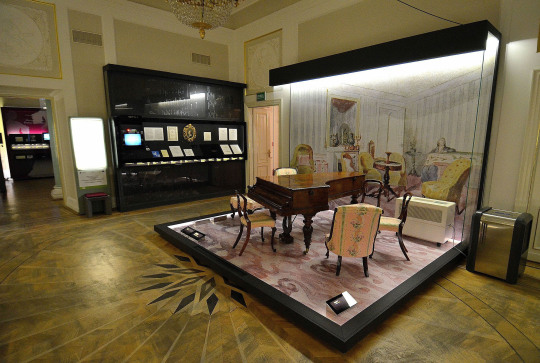

He supported himself in Paris by composing, performing, and teaching piano. He died in Paris in 1849 at 39 probably of TB. Chopin’s Polonaise Opus 53 was and is one of our favorite compositions. A polonaise is a Polish national dance, with its own typical rhythm. Chopin took the polonaise form and made it more complex and sophisticated. You can find Horowitz and Rubinstein recordings of Opus 53 on UTube, but I offer a link to young Natalie Schwamova’s recording. Her nearly seven minute performance is interesting, delightful and enjoyable.
https://www.youtube.com/watch?v=EPPbk3Xa-8g
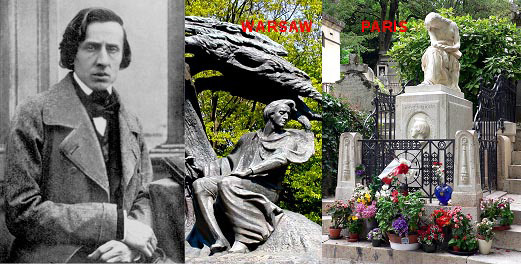
We considered visiting Malbork Castle in the north near the old city of Gdańsk,
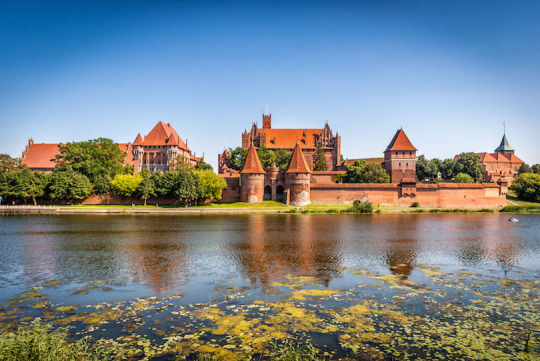
but we just didn’t have the time. We planned to go south from Warsaw to Krakow and visit the Wawel Royal Castle and several other sites in the area
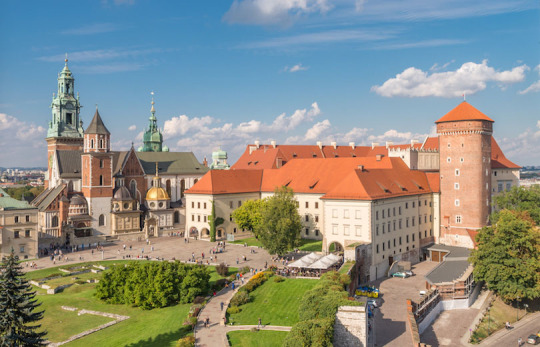
including the Nazi Concentration Camps at Auschwitz and Birkenau. We were

also very interested to see the famous Wieliczka Salt Mine near Krakow.
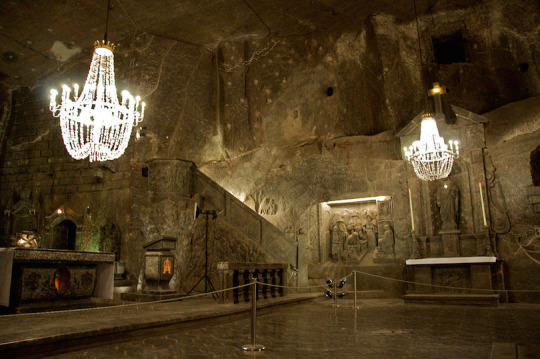
Of course we would take the usual tour of the Polish cities of Warsaw and
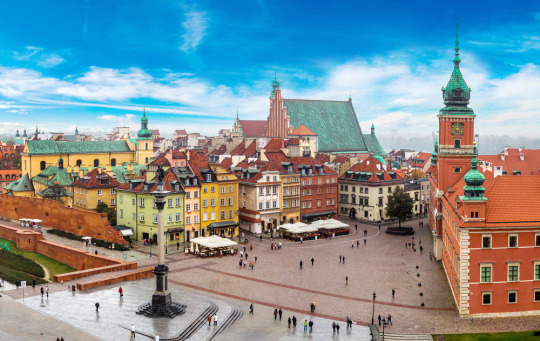
Krakow, both of which have very interesting and historic town squares which
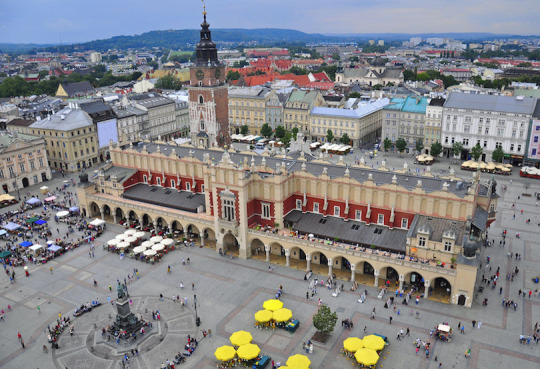
you see in these two photos. We kept telephoning about the visas every so often. Finally with about two weeks before our trip was to begin we were informed by the PMM that they had no record of our passports or our visa applications. We immediately contacted the US Embassy in Bonn, the then capitol of West Germany. They told us that the Eastern Block frequently did that hoping to obtain a passport that they could use for clandestine purposes. The Embassy issued us temporary passports and told us they would eventually recover those passports. OK, the end of our plan for Poland. We still wanted to travel behind the Iron Curtain. The Embassy told us that travel to Czechoslovakia or Hungary would be less restricted and involved. We decided on a trip to Prague, capitol of Czechoslovakia. In this case we could not enter the country from Germany, but would have to enter from Austria, an unaligned country at that time. We could return to West Germany directly from Czechoslovakia. So we set our itinerary as driving from Germany through Regensburg and Passau to Lenz, Austria (lower left corner of the map below); then north into Czechoslovakia and on via Tábor to Prague.

We would spend four days in Prague, then drive west to Karlovy Vary, a very famous hot springs resort. We would spend two days there and then drive west and exit Czechoslovakia near Cheb into West Germany. A visa was required as well as an itinerary, but not as detailed as the Poles. All completed without incident. The Czechoslovakians were very helpful in planning our trip. OK, we were all set without difficulty this time. We would spend the first night of our trip in Passau, the German city at the confluence of the Inn and Danube Rivers. It’s

easy to see which is the Blue Danube, isn’t it? From there we would drive in Dave’s Porsche east through Austria to Linz, then north into Czechoslovakia through Tabor and on to Prague. The first day of our trip was rainy, but even with the weather; the 200 mile trip should put us in Prague for lunch. At the border the Austrians cautioned us against venturing off the main road. On the Czech side most of the people we saw were armed, giving us some ominous thoughts. They asked where we were going and how long we were going to be in country. Then they took our passports and went inside. After a long wait, they returned our passports and waved us through. The road was paved, but it was just two lanes and beveled to shed water and snow. We were in the countryside, not a building in sight and we had not encountered another vehicle after crossing the border. We were coasting along at slow speed for us when our little car just slipped off the wet road and into the ditch. Our efforts only carried us further into the ditch. We were going to have to have a tractor or vehicle of some sort to pull us back onto the road. Is this how we are going to spend the first day of our trip – standing on the side of the road hoping for someone to come by and help us? No cell phones in those days. Hours passed. The rain was intermittent. Not a single vehicle came by. Then we saw two guys in the distance way down the road walking toward us. Hopefully they can help us. But how do we communicate? Dave spoke a little German, but that was all we had other than English. As the two guys approached us they were laughing and talking and judging by their clothing surely they were farmers. We thought that even if they don’t have a tractor, maybe they have a horse that can pull us out of the ditch. As it turned out we did not have to worry about communicating. It was pretty obvious what we needed. Without any effort to communicate, one guy took the front bumper and one the rear bumper. The two guys began to bounce the little Porsche up and down and bounced it right back onto the roadway. The four of us all laughed, spoke in our own languages, shook hands and they continued down the road continuing to laugh and talk. Doesn’t this indicate that most divisions in this world are strictly political? But, oh my! Were we grateful!! They knew it. We knew it. One of those circumstances of life – help needed – help provided – pass it on. Were any of the four of us thinking about democracy or communism? We stood next to the car and watched them as they continued. They looked back a couple of times – we waved – they waved back. OK, we were back on our way. It was well after lunch now and it was raining again as we drove into Ceske Budejovice. This was a fair sized town. There were very few people moving about. We stopped at two restaurants that bordered the road, but they were closed. In Europe the restaurants are only open during meal time and we had clearly missed that. Dave wanted to drive around in the town and try to find one open. I didn’t, recalling that we had been cautioned against driving off the main road, just drive from destination to destination according to our itinerary, and I though it would be futile anyway. We agreed then to drive on to our hotel in Prague. The landscape we were driving through was either farmland or forests. No villages or homes visible from the road. No work being done in the fields, either. Of course it was a rainy day. Another significant aspect was the absence of cars – it was rare to see one. Not many trucks either. No billboards or any advertizing anywhere. We passed through Tabor in the rain. This was just a village and very few people were moving about. It continued to be farmland and forests all the way to the outskirts of Prague, the capitol. There we began to see evidence of industry – big buildings, trucks, still very, very few cars. The lack of cars was surprising to us because we knew that Czechoslovakia was one of the few Eastern Bloc countries that manufactured automobiles. We were to learn later that a Czech citizen had to have a special government certificate of “Outstanding National Merit” to buy a car and even then it was a one to two year wait. Most of the Czech cars were exported to other Eastern Bloc countries. In Hungary a citizen could only buy a used car. And all of the Eastern Bloc vehicles were of poor quality. As we drove through the city we saw very few people moving about, very few vehicles and the streets were dimly lit. It was dark and after the evening mealtime when we finally pulled up in front of the Grand Hotel Jalta. It was on a huge open square, Wenceslas Square.


We parked in front of the hotel and there were only a few cars in this huge square. We went inside, registered, gave up our passports and told them our situation. The receptionist told us that the restaurant was closed, but that there was still someone in the kitchen. They would prepare us something to eat if we were not too particular. We went up to our rooms while they prepared a meal. Both Dave and I were amazed at the old world quality of each room – they appeared to be furnished with antiques, but first class. I thought that these were two of the rooms that they always gave foreigners and that surely they were completely equipped with hidden cameras and microphones. Both rooms had a balcony looking out into the square. We went down to the restaurant and had a nice meal. It was a meat dish and three veggies all on a plate with bread and wine, as I recall. OK, our first day behind the Iron Curtain of Communism was certainly not dull. I didn’t have any difficulty going to sleep. I woke up and looked into the square. Only a few people walking briskly, apparently on the way to work. I noticed in the street a single line of tracks in the dust made by the few vehicles that passed this way. Wow, this is the capitol and very little traffic. Then as I looked nearly straight down, I saw a crowd around our car! Oh, my, even with traffic that sparse someone had run into our car! I called to Dave and we rushed down. There was quite a crowd around the car, but we were able to squeeze through. The car was OK, not a scratch. The people were just taking a good look at the little red Porsche. We went back into the hotel and asked the Concierge if we should move the car. He said “no they won’t harm it. They just want to look at it. There are two Porches in Czechoslovakia today. One is driven by the Swiss Ambassador and the other one is yours.” We went into the restaurant for breakfast. We sat down, and I thought ‘how are we going to order? Will they have an English menu?’ The door to the kitchen opened and a waiter came out holding a large tray balanced on one hand. Two stemmed glasses were on the tray. The waiter came straight toward us and as he approached he said cheerfully in English “a bit of California sunshine for our American guests,” and placed two glasses of orange juice in front of us. OK, another potential hurdle passed. We had scheduled an all day personal guide for the first three days in Prague. She was waiting for us when we came down to reception. She was a very pleasant woman in both appearance and demeanor. Conservative and business-like. No jewelry – just rings on her fingers. Mid 40s or so. She was friendly and easy to talk to, but serious and ready to begin. We enjoyed touring Prague with her. We saw all the sights on our list and more. The association became more friendly when she saw that we were just tourists, nothing more. I think she showed us things that were not on her list, also. We had lunch with her every day, each day a different, nice restaurant. Dave tried, but could not get her to accept a glass of wine with lunch. She said that she was not allowed to drink while working. She did lightly criticize Dave for drinking and driving even though it was just one small glass. Dave also tried to get her to drive the Porsche, but she emphasized that she didn’t have a license. It was evident that the regime had rules for just about everything and she was not going to break one of them. Big Brother might be watching. She said she was a mechanical engineer and her husband was an electrical engineer. She did the tourist job from time to time to supplement their income. She said they lived in a one bedroom apartment. Two engineers and a second job – living in a one bedroom apartment, no car! And she was very cautious not to be seen breaking any rules. Knowing this nice woman told us a lot about the situation in Czechoslovakia and under communism. She knew her city. We could not have asked for more in regard to the tourist sites of Prague and with casual conversation with our guide and careful observation, we learned a lot about the life under communism. Oh, my. The grim reality of it all was demonstrated. However, we could not have asked for a better visit to the tourist sites of Prague. The city virtually escaped the nearly total destruction of many European cities, especially Germany, in WWII. So, it has one of the best preserved historic city centers in Europe. And it has quite a history – from Capital of the Holy Roman Empire to one of the leading cities of the Austro – Hungarian Empire to the capital of Czechoslovakia to one of the key cities in the collapse of Soviet Communism to currently capital of the Czech Republic and a UNESCO World Heritage Site. I don’t want to deviate from the narrative of the trip to a description of Prague tourism, but I should say something. The city possesses fine examples of Gothic, Baroque, Renaissance and Art Nouveau architecture. The city is dotted with fine old homes and historic buildings. On any tourism list you will find Prague Castle, Charles Bridge, St. Vitus Cathedral, the Astronomical Clock, National Gallery, the National Museum, the Clementinum, the old Jewish Quarter and the National Theater which the Communists had closed when we were there. Prague Castle is not a castle as we normally think of one, but is rather a very large group of connected buildings, a vast complex. Here is a picture of Prague Castle.
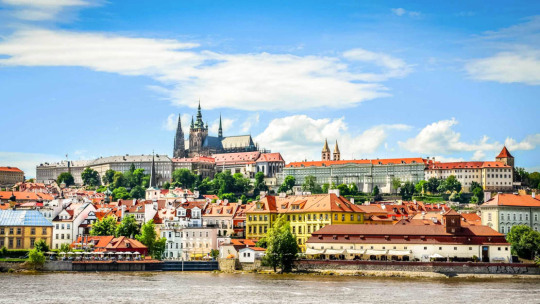
All of those buildings on top of the hill in this picture are The Castle. The Castle contains St. Vitus Cathedral, St George’s Basilica and convent, the Old Royal Palace, the Royal Garden and the residence of the Czech Republic President among other things. Charles Bridge is notable because of its 32 unique points of interest including statues of Holy Roman Emperor Charles IV (very prominent

in Czech history), St. Wenceslas (patron saint of CSR) and St. Vitus. The Clementinum is a collection of historic buildings, originally part of a Jesuit College. The Astronomical Clock is from 1410. It is the third oldest in the world,

and the only one still in operation.Every hour the 12 Apostles and other figures appear and parade across the face of the clock. Prague’s wealth of art and artifacts is not housed by category in one massive building, but is scattered over many venues. At first we thought it was inconvenient to have so much under one heading scattered across so many different buildings, but then we realized the merit of this idea - saving these beautiful old buildings and giving them real purpose. Prague may not have extensive collections such as Paris or London, but there is some of just about everything: archaeology, anthropology, mineralogy, zoology, photography, fashion, sculptures, applied arts, ancient art, Bronze and Iron age items, Greek and Roman pieces, Middle Ages art, Classical era art, etc. and Prague has the old masters, too, such as Monet, Picasso, el Greco, Goya, Rubens, van Dyke, Rembrandt, van Goyen, etc. The great open squares and beautiful buildings, beautiful inside and out, really impressed us. Here is a photo inside the National Museum.

You have already seen photos of the beautiful Wenceslas Square where our hotel was. And here are three views of the immense Prague Old Town Square.

Now let’s get back to the trip narrative. One day after a day of touring and a nice evening meal at the hotel we decided to sample the Prague night life. We asked the concierge for a recommendation. He gave us an address and directions to a spot near the hotel. We walked over, entered, found a table and ordered a beer. There was absolutely no atmosphere. The place was fully illuminated – as bright as a department store. There was a band and five or six couples dancing a slow fox trot. There were no single people. We listened to the music. I didn’t hear a single tune that I recognized. We found later that many influences from the West including music and literature were banned. Not allowing that decadent western stuff to contaminate the Eastern Bloc citizens. We finished our beer and left. When we entered the hotel, the concierge said “you’re back early.” Then he said “I know a place you might find interesting. You’ll have to have your passports to get in. Be sure to bring these passports back to me tonight.” He gave us our passports, the address and directions, again within walking distance of the hotel. He said “knock on the door and tell them you’re Americans.” We went there and the front door was a massive wooden one. There was a small rectangular window in the door. Shades of “speakeasy” time in Chicago. We knocked on the door. The small window opened and a voice said something in a language we didn’t understand. We replied in English “we’re Americans.” The voice said “passports please.” We handed them through the little window. It closed. We waited for quite some time. I began to think ‘wow, have we lost our passports again!?’ The door opened and we were ushered into a small, dimly lit room. The guy returned our passports and opened a second door. I looked into a dimly lit room full of people. Across the room was a stage and a guy was standing there with his arms and legs spread. He said in a loud voice “lets………..twist……..again……..♪LikeWeDidLastSummer♫” and the band hit it and he and entire room began to undulate (and twist!). Now this could be a nightclub anywhere in the West. People out for a good time. Lots of single people. People easy to talk to, easy to dance with. Embassy people and well positioned locals. We had no difficulty getting with it and having a good time. After some time in there, a guy whispered in my ear ‘you better look after your friend. He’s into a hot discussion with a guy from the Russian Embassy.” I went over, interrupted, sat down, changed the topic of discussion. We were both getting a little woozy by then and soon returned to the hotel. It was after midnight, but the concierge was still there waiting for the return of the passports. We used our last day in Prague just driving around the city to see what we could see and perhaps engage some Czechs in casual conversation. We would park the car on one of the many large and beautiful squares in the city and just stand nearby. People would come over to look at the car, but when we tried to engage them about it, they hurried off. We tried this on and off all day and we didn’t engage a single person. We learned later that after Russia and East Germany, this was the most repressive country in the Eastern Bloc. If you were seen talking to a person from the West you could go to prison and at the very minimum you would be in for a very unpleasant interrogation. Day six in Czechoslovakia and we have a 75 mile drive from Prague to Karlovy Vary or Karlsbad as it is best known in the West. We are soon in the countryside and the terrain became hilly. It’s the first really varied terrain that we have seen so far. After driving through some beautiful scenery, from elevation the town poped into view. As we wound down and pulled into the town we could see more activity and more vehicles. Probably Eastern Bloc people on vacation or there
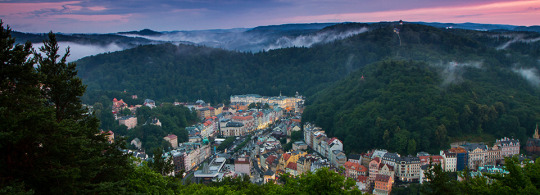
for medical and spa treatment. Our hotel is the Grand Hotel Pupp and it
is an absolutely first class lodging. Our rooms are ready for us – no waiting for a 4 PM check-in or any of that stuff. Both our very nice rooms are spacious with a
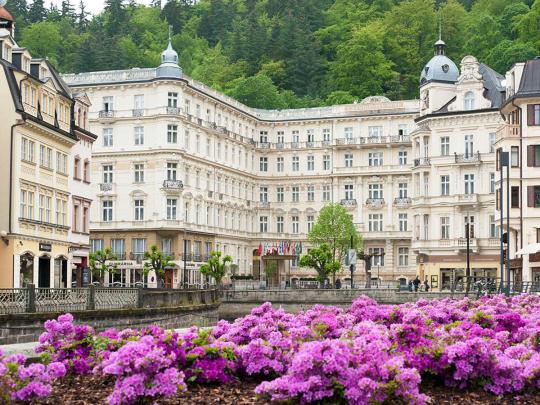
sitting area and looking out over the square and the river. We have nothing scheduled until the spa treatments the next day. We decided to walk around the town and find a restaurant for lunch. We had a nice meal overlooking the river. There was certainly more observable activity than in Prague, but no one tried to talk to us and we also kept to ourselves. There was somehow a subdued feeling about the place. We strolled around through the promenade of the spa area. Striking and beautiful but a bit gritty. Not as well maintained as it should be.

OK, back to the hotel and relax until evening meal time in the hotel restaurant. We came down a little early and decided to go into the bar for a drink until the restaurant began serving. The place was full of Russian soldiers! I joked to Dave not to get into an argument with one of these guys. He didn’t, and probably none of them spoke English anyway. Then to the dinning room and absolutely first class dinning. We thought that at this point this could very well be the best accommodation in ČSR. Nothing eventful the next day with our spa treatments. We had the massages, soaked in different temperature pools and drank the mineral water. For people who were there for medical reasons there were
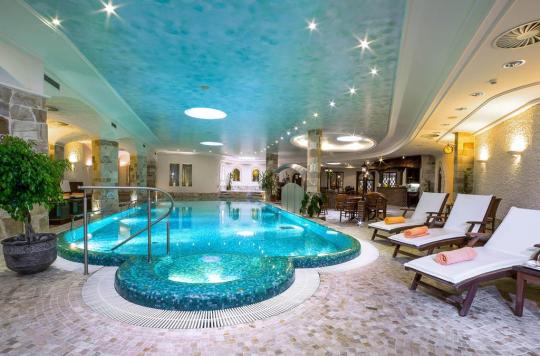
special programs that took at least two weeks depending on the illness and the treatment. The next day I was getting something out of the car and a guy came up to me and addressed me in English. Immediately I thought “uh-oh, big trouble.” But no, it was a guy from East Germany on holiday and he wanted to know about the car. He was there with his wife and two kids. He said he was a mechanical engineer and that he had worked on the Aswan Dam project in Egypt. He said he was from Dresden. This was one of the German cities that suffered the ‘fire storm’ bombing in WWII. Darmstadt where I was living had suffered the same fate. He was full of conversation and seemed relaxed about it. His family was more reserved. Dave let him drive the car around the block, with Dave as copilot, of course. He wanted to exchange addresses and invited us both to visit him in Dresden. He said ‘don’t make any hotel reservations. You will stay with us.’ I began to wonder if this guy was with Stasi (East German Secret Police). He was so casual and open with us foreigners whereas most people didn’t want to even be seen near us. But, as far as we know he was just a friendly guy and we did exchange a few correspondences with him and he repeated his invitation to visit. I wish I had contacted the US Embassy in Bonn, asked them about it and maybe gone to visit him. But nothing came of it. And maybe I am fortunate it didn’t. I have another connection to Karlovy Vary or Karlsbad as it is mostly known in the US and Western Europe. In 1989 Tami and I were living in Frisco, Colorado to take advantage of the good and extensive skiing in the area. We decided to spend a summer in Laguna Beach, California where we had previously lived. I had learned to surf in nearby Huntington Beach when I first came to work in California as a young engineer. It would be a time at the beach and give me an opportunity to get in some surfing. After diligently searching for a short term rental in Laguna, we concluded that the places we could afford there we would not stay in even if they were free. So we went south along the coast looking for a place to stay. We found a nice spot in the little town of Carlsbad. It was like Laguna was many years before. And I did not realize that it was named after Karlsbad or Karlovy Vary. Our place was just across the street from the beach and it had a swimming pool. We could only rent it for the months of May and June. It was already rented for July and August. But anyway we were set for a holiday at the beach. We soon discovered that the little town had an interesting history. Of course Native Americans were the first in the area followed by the Spanish. Gold expanded the Euroamerican settlement of all of California, and with that came the railroad. In the 1880s, the Santa Fe Railroad had a depot in the area. A former sailor named John Frazier dug a well near the depot and sold his water to travelers at the ‘whistle stop’ station which soon became known as Frazier’s Station. A test of the well water showed the water to be chemically similar to the water in the renowned Bohemian Spa of Karlovy Vary or Karlsbad. The Carlsbad Land and Mineral Water Company was formed and after a period of growth the town of Carlsbad was incorporated. The site of John Frazier’s original well can still be found at Alt Karlsbad, a replica of an Hanseatic house located on Carlsbad Boulevard. A statue of John Frazier is also there.

Today, 2017, the city is a sister city to Karlovy Vary. And today Carlsbad is among the nation’s top twenty wealthiest communities and is the fifth richest in California. So, today Carlsbad is a tourist destination, just as Laguna Beach is. Now, back to Karlovy Vary in Czechoslovakia in the 1960s. Our last day in ČSR was upon us. We were scheduled to check out before noon. We were a 35 mile drive from the West German border, surely not more than an hour or so. We still had quite a bit of Czech money which we could not exchange and which was forbidden to take out of the country. So, in an effort to spend this excess money, we asked the hotel if we could extend our stay and take our rooms as ‘day rooms’ at a reduced price and check out after dinner that night. They said that they had never heard of such a thing, but they allowed it. So we would have a nice lunch in Karlovy Vary and we would celebrate our final meal in ČSR in the fine restaurant of the Grand Hotel Pupp. We must have made the correct comments, because the hotel gave us a little celebration also. They served us a delightful desert at no cost. Even after an extravagant lunch and an extravagant evening meal, after we paid our hotel bill, we still had some money left. We decided to stop at a spot on the road, have a couple of drinks and surprise the rural folks with a nice tip. So it was dark as we wound our way out of the famous spa town of Karlovy Vary. We kept getting closer and closer to the border and we still had not seen anyplace along the road where we could spend some money. We finally saw a dimly lit building that looked like it could be a gasthaus, a place that sells food and drink and rents a few rooms. We pulled up and went in. Only men in there and they were all starring at us. Dave tried his German on the bartender in ordering a beer. The guy understood and started drawing us an on tap beer. Another guy came over from his table and said “do you guys speak English?” You could see the Porsche through the window. He asked “is that an American car you’re driving?” Other men got up and came over to hear the conversation. The English speaker translated whatever we said. They could not believe that the car was made in West Germany. “No, they are not making a car like that over there!” Obviously they believed the State propaganda. They wanted to take a good look at it. We obliged. They wanted to see the engine, everything. We ate, drank and talked for quite some time with them. The time passed 11 PM. We were not Cinderella, but we had to be out of ČSR before midnight. Our visas expired then. As we were preparing to leave, they would not let us pay! There were hand shakes and back slaps all around and we were back on our way. But we still had that money!! Well, nothing to do now but hope we are not searched at the border. The ČSR border guards took a casual look at the passports, but mainly they wanted to make sure there was no one else in the car. They waived us on and the West German guards took a quick look at the passports and waved us on and we were back in the Federal Republic of Germany. We felt a relief to be back in the West.

So, all our concern regarding the money was completely unnecessary. We had several hundred Koruna (Crown) which we divided and now some fifty years later that bill is all I have left. From the encounters we had and the interaction with the few people we could interact with, you might get the impression that life behind the Iron Curtain was not too bad. Do not think that for a moment. Life in Stalinist Communism was hell. People’s lives were destroyed. Innocent people were sent to prison, innocent people were executed. We now know without question the grim reality of life behind the Iron Curtain from the memoirs of people who escaped and from the memoirs of people who survived. There are these records now as well as books and movies. The horror of this nightmare is the personal hell each and every person endured. When the Curtain went up all property was nationalized and farms were collectivized. The affluent, the aristocracy, property owners, the clergy, the media, sport, culture, music, literature, education - it all fell under the totalitarian rule of Stalinist Communism orchestrated from Moscow. Those who did not comply with socialism were not only interrogated, intimidated and put under surveillance but also subject to house searches, during which the Secret Police invaded citizens’ privacy while searching for illegal literature and secretly installing bugs. Bribes abounded; the presence of bugs in homes prevented people from speaking openly; there were long lines at the shops for everyday products. There was little enterprise, choice or customer service. Everything was ordinary, without color, devoid of advertising. That was the grim reality of life under Communism. People were imprisoned for filing complaints or signing petitions. Company leaders were replaced with incompetent party members. Of course the economy took a tailspin with this reorganization. If a citizen defected, the family left behind was severely punished. Defected is the proper word here, but a more accurate word would be “escaped.” Most everyone wanted to escape, but most accepted the grim reality of the nightmare because of family. Tami and I became friends of people who escaped this nightmare. They did not talk about their life and the escape. I think the reason is similar to people who return from war. No one can understand it. The only people who understand the hell of this nightmare are the people who lived it. Even Stalin became so paranoid living in this nightmare that he created that he could barely function late in life. Even his daughter, Svetlana Alliluyeva defected (escaped) while on a trip to New Delhi, India in 1967. She was given political asylum in the US. No one can describe it, no one can explain it. You had to have lived it to know it. On a later trip behind the Iron Curtain to Budapest, I had the need of medical attention. The doctor pleaded with me to help her escape. I wanted to help her, but all of her ideas were just not feasible and would have only served to land us both in prison. Yes, life behind the Iron Curtain was a nightmare. I know now why the ČSR so highly recommended the Hotel Jalta in Prague when we were planning our trip. Below that hotel is a huge, three level bunker which was the headquarters of the Secret Police. So surely they had all the rooms of that hotel fully bugged. Now the bunker is owned by the hotel and it has been turned into a museum. Here is a link to a blog written by Tracy Burns, describing it with photos. https://www.private-prague-guide.com/article/museum-of-the-cold-war-prague/ Another museum of the era is The Museum of Communism. It was begun by an American and a Czech to preserve some of the artifacts of the era and to remind others of this grim, bleak historical era. The museum theme is “Communism - the Dream, the Reality, the Nightmare.” It does not tell the story of Communism - no one can. Only those who survived it can know it.
Touching on the history of communism in ČSR, the Prague Spring of 1968 was prompted by the near collapse of the once robust pre-communist economy. The communist officials thought some political liberalization with economic liberalization and reorganization would avoid collapse. These ideas were adapted. During the process Leonid Brezhnev sent in Eastern Block tanks to signify who would have the final say about this reorganization. Thankfully it was without violence. Prague citizens rode around town on the tanks. The economy revived, but soon thereafter a heavy crackdown on the political liberalization measures soon made ČSR the most repressive state in the Eastern Block. The communist nightmare continued. West Germany opened an embassy in Prague in 1974. This event was virtually insignificant until the summer of 1989 when this embassy and Prague would be at the center of the collapse of the USSR and especially the GDR. The collapse of the USSR began with discontent in Poland, continued in Hungary, the GDR (East Germany), Bulgaria, ČSR, and Romania. Romania was the only communist state in Europe to overthrow its communist government with violence. The factors undermining the political stability of the USSR were numerous. And in the GDR even more so. In 1989 there were a lot of indicators that a breaking point was approaching. I had always looked upon our role in the West as containing Communism until it collapsed from its own problems. I never dreamed that it would come in my lifetime. And no one, not even the Western intelligence agencies, could predict that the summer and fall of 1989 would be the time of the great miracle - the collapse of Stalinist Communism. The West German embassy in Prague was soon inundated with refugees from GDR wanting sanctuary and transport to FRG (West Germany). The West Germans were happy to oblige in any way that they could. I recall a notice engraved in stone at one of the Iron Curtain observation points near Bayreuth in FRG which said in German “we will never forget our brothers and sisters in the East.” The GDR citizens were given papers and sent by bus and train to the GFR, the train actually traveling through GDR to FRG. The flow of refugees began as a trickle, but with knowledge of success, it soon was a torrent. About 62,500 GDR citizens used this ‘escape’ route. At one time there were over 6,000 abandoned GDR Trabants (cars) on the streets of Prague. Of course during this relocation there was considerable dialogue between officials in the ČSR, the FRG embassy in ČSR and GDR in Berlin. With the influx of GDR citizens overwhelming the embassy, German historians speak of this dialogue becoming nothing short of an ultimatum to the GDR regarding regulations on travel by GDR citizens to the West. The historians say that was a valuable contribution to the fall of the Berlin Wall and the opening of the GDR borders much sooner, and in a different manner, than intended. The East German government announced on 9 November 1989 that all GDR citizens could visit West Germany and West Berlin. Crowds of Germans, from both East and West, crossed and climbed onto the Berlin Wall in a celebratory atmosphere. Some say it was the biggest block party in the history of the world. The nightmare was coming to an end.
Events across the entire Eastern Bloc were like a tidal wave sweeping the communists aside for democratic reforms. The change in Czechoslovakia was like a fresh wind in the air, but did not take firm form until 17 November 1989. From that point on it was just a matter of time until the people developed the courage to awaken and assert themselves. On 24 November the entire top leadership of the Communist Party of Czechoslovakia (CPC) resigned. On 28 November it was announced that the CPC would relinquish power and dismantle the one party state. Obstructions were removed on the border between Czechoslovakia and Austria. The Velvet Revolution was underway. On 10 December President Gustáv Husák appointed the first largely non-communist parliament since 1948 and resigned. On 28 December Alexander Dubček was elected speaker of the parliament. On 29 December Václav Havel was elected President of Czechoslovakia. The 41 years of communist horror were over. A 41 year nightmare that cannot be adequately or properly described in book, in film, in any kind narrative, description or explanation. Only the people who endured and survived it can know it. In June 1990 Czechoslovakia held its first democratic elections since 1946. The country was now a free and open society, but that’s not the end of the story. Disagreements between the Czechs and the Slovaks, the two largest ethnic groups in the federation soon emerged. There was the ethnic difference, the 20% disparity in GDP per capita between the groups, and the Slovaks resisted the Czech’s preference for rapid privatization of the country’s state run industries. The results of the parliamentary elections in June of 1992 highlighted these differences, and discussions between Czech and Slovak leaders later that year resulted in the peaceful dissolution of the Czechoslovak federation, to become known as the Velvet Divorce. This dissolution resulted in the creation of two new countries on 1 January 1993 - the Czech Republic with its capitol in Prague and Slovakia with its capitol in Bratislava. Two free and open societies. The Prague Spring, the Velvet Revolution, the Velvet Divorce. All done without violence.
1 note
·
View note